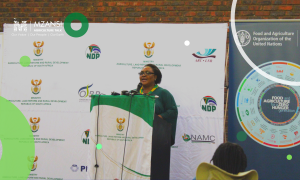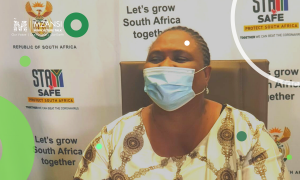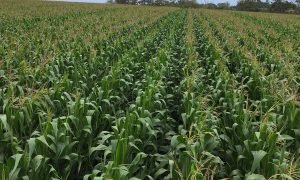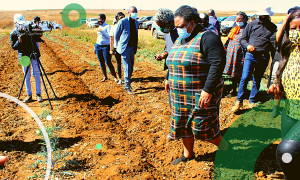Land Bank failure points to Government’s uncoordinated strategies in agriculture

Land Bank CEO, Ayanda Kanana, recently indicated that the bank will not be able to dispense loans in the next four to six months due to a liquidity problem and the inability to raise capital in the open market despite receiving a R5.7 billion guarantee from National Treasury.
The bank’s defaults to lenders could lead to bondholders demanding immediate principal and interest payment if the bank is unable to raise R5 billion. Drought, seasonal changes, and foot and mouth disease (FMD) resulted in the half-year results in September showing R168 million losses and non-performing loans increasing from 5.4% to 9.9%.
These challenges make it difficult for the bank to provide financial services to farmers and agri-businesses. The bank’s inability to raise capital in the open market further demonstrates the Government’s inability to manage state-owned enterprises and further underscores some reasons for Moody’s downgrade.
There is no doubt that the Land Bank must play its part in ensuring food security and continue with its developmental role in agriculture. The state needs to act as a catalyst and invite all role-players in agriculture to assist in charting the bank’s way forward. The role players in agricultural finance and farming are best equipped with insights about the challenges in the sector and the financing solutions required.
Before corrupt elements eroded the Land Bank’s reserves, it managed to fulfill its mandate to provide farmers with the financial instruments to grow their businesses.
Throwing money to the problem is not the solution to revitalize the bank, however only political will can. If the government departments involved in agriculture do not take their roles seriously, the bank will not survive the turbulent agriculture trading environment.
National Treasury
The National Treasury’s role as the shareholder is to guide and support the bank’s strategic direction. In recent times Treasury has neglected to advise the Land Bank due to the problems at Eskom and SAA. The bank now needs Treasury to take an active advisory role to stop a burgeoning national food crisis that will see a sharp rise in food prices, increased hunger, and increased unemployment.
Department of Cooperative Governance and Traditional Affairs (COGTA)
One of the key functions of the National Disaster Management Centre (NDMC) under the mandate of the Department of Cooperative Governance and Traditional Affairs (CoGTA) is to coordinate disaster interventions and emergency support and facilitate rehabilitation projects. The NDMC failed time and again to support drought-affected farmers, resulting in them defaulting on their loans to the Land Bank and other commercial banks. This has a direct influence on the bank’s current crises. The NDMC must ensure that timeous relief is provided during national disasters to mitigate and minimize the knock-on effects.
Department of Agriculture, Land Reform and Rural Development (DALRRD)
DALRRD failed to channel the bulk of its stimulus funding and conditional grants received through the Land Bank to support the emerging farmers’ programme. The Land Bank had to turn to the open market to secure funding for riskier projects that required buffer elements to emerge successfully. Because the Land Bank spent a lot of its efforts in trying to appease the shareholder’s demand for financing emerging farmers, commercial farmers, who largely serviced their debt book, took their loans to commercial banks.
Department of Water and Sanitation
The Department of Water and Sanitation’s inability to provide water licenses in time for farmers, meant the agriculture sector growth was hampered and little transformation was achieved. Water licenses has been cited as one of the biggest problems that inhibit the bank from discharging its mandate of supporting emerging farmers as many lack access to water.
The Land Bank urgently needs a revitalizing business strategy that includes the shareholder and the relevant departments that have direct impact on agricultural businesses.
The bank must appoint board members that understand agricultural finance and policies, addressing the weaknesses of the centralized credit model and consider a decentralized mode to improve touch points and client service.
The state must create a coordinated and quicker response to agriculture disaster to ensure that the Land Bank’s institutional capabilities is not eroded after every disaster.
DALRRD must channel their funding for emerging farmers through the Land Bank to ensure the bank funds shortfalls, thereby blending the finance of emerging farmers and increasing the success rate of transformation in agriculture.



















